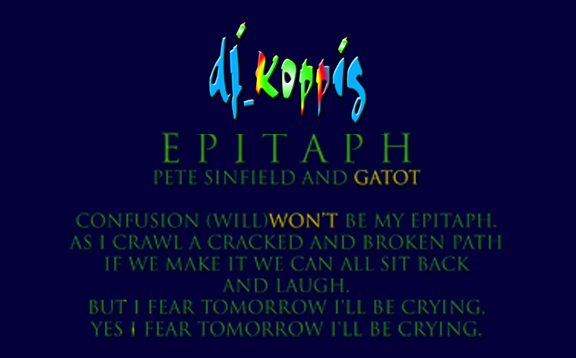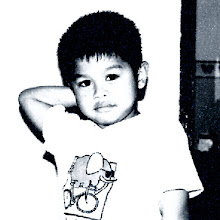 RICK WAKEMAN - (1975) Lisztomania
RICK WAKEMAN - (1975) LisztomaniaStudio Album, released in 1975
Curious, pretentious, stylist, but perhaps much uninteresting, the Lisztomania point of attraction is to speak off, in all its different ways to be appreciated or disgraced. I have a memory idea of how, years ago, upon just discovering Wakeman (or much of prog), I kept getting the idea from many that this album is a top recommendation, in a fiendish looking grace. Nowadays, the idea has completely gone mute, and I can certainly call it just like that. Interesting is that the more fun than the deep project can be (is, what to complicate things), a “classic” time reflection, a “classic” soundtrack perhaps, the classic stagger of the character even better. I’d rather discourage the lights of ugly music that White Rock provides, that is, in favor of more un-receptive taste this one concedes to charm or to irritate. In a more leisure train of thoughts,Lisztomania ends the 1975 point of two already made masterpiece and an awaiting third, plus a last (and definitely least) “criminal” great music-show. So it is a land within the presumable rich and thought-over Wakeman gestures; ending just to a brave (not smart) move, on a different string, and on a grab of “cinematic” experimentalism: on fruits and loops of a mindless kind. Lisztomania can easily be the album of the 70s you can absolutely despise and find worthless or, not without a thrill of actually reaching such a quality, a leisure, acceptable, interesting moderate idea. Words and replicas, plus screenage, ahead of music.
The Lisztomania “concept” is the relevance of the Lisztomania film, a movie I happened to see (I rarely get to watch the films in discussion, so I also don’t normally put the accent on the relation, at least not greatly). The movie, in all, is disappointing, ugly, and even wrong-played. In the kind of a chic & shock concept, the message is heading towards a diverse ubiquity of rough shots. Mainly in a goo-ish manner of a fantasy (and phantasmagorical) act, from madman attributes to deranging inner conflincts, grass metaphors, enlarged penises and orgies of a brew’s pill, demands and deed, dooms and redemptions, the capture is of a sizzling edit, but can simply turn both hilarious and disastrous to a normal watch, or a cacophonous advanced interest. Wakeman himself appears in the movie, in a Razzie deaf interpretation of a resurrected tin man incoherent troll. More to say, the Lisztomania soundtrack is absolutely reliable on the film, since I don’t remember much more music on the film, being only fragmented in this short point of an album, and, the other way around, showing music’s lack of affection in being edited, by the script of things.
Lisztomania is, from film to sound scratch, the opportunity of a collaboration between Wakeman and Who pretty face, Roger Daltrey. Both performances stay illegible, yet for the sake of talking about it, it’s a fine detail. Daltrey is actually the main figure in all this, but Wakeman’s somehow the only one supporting the deceptive sour grapes of his work (respectively the director, for his piece of mind). Daltrey has the vocal on the best ballads of the album, and they’re actually…tasty.
Back to the soundtrack idea, I really believe this precocious tastes on act in a limelight conclusion of Wakeman’s impulse, even with many other focuses on “music”. As I’ve said, White Rock sounds the terrible way, and till the 90s there’s no such thing as good intuition. So it’s a stub of a decision, whether Lisztomania is important in its act, or the simple of it is yet a headache in every aspect.
Music runs for a glimpse of 32 minutes. It may seem a record, but it’s almost the one in Wakeman discography, Piano Vibrations being a daft improvisation in a total of less played minutes. Completely fragmented and shakingly free-styled, there’s the rapid flow that can flourish everything, and there’s a queerness in sound that can make the good vibes and the peaceful catchiness…forgetful. The great picture is that one of themes, in an undoubtedly soft pop-rock grain of stick-stacks. Progressively, the story is told within the music. An introduction of Rienzi/Chopsticks makes the best, presumably, of a cheer act and a glam play, the piano passages actually bring a “Liszt” in it. Then comes the ballad of all emotion, in a tranquil and fine yet timing. With the great firework of “rage” and “drama”, things get a middle-walk of fragile and un-mentionable effects: usually they are Wakeman keyboard smash melodies or a great deal of a color within an aspect; but it can get to ludicrous scream vocalizations, i.e. Hell. Finally, once the climax of Rape, Pillage and Clap gets the hectic drama off the decibels of malformed ideas, the last of the album gets a quite serenity in being damp and aromatic. The main course in all Lisztomania is melody sample and cult fixation. Music’s quality is cheap in favor of spontaneous effects and “rigorous” simplicity. In all, there’s nothing in something.
1975’s sepsis moment almost penlights on how Wakeman can be the composer of three to four concept masterpieces, only by exceptional surprise, the rest turning in angular light sways. But, not that serious, Lisztomania is and isn’t a good soundtrack to achieve in hearing.
Track Listings
1. Rienzi / Chopsticks fantasia (4:20)
2. Love's dream (4:25)
3. Dante period (2:05)
4. Orpheus song (3:10)
5. Hell (1:59)
6. Hibernation (1:11)
7. Excelsior song (2:32)
8. Master race (0:45)
9. Rape, pillage & clap (3:09)
10. Funerailles (3:48)
11. Free song (Hungarian Rhapsody) (1:57)
12. Peace at last (2:59)
Total Time: 32:20
Line-up/Musicians
- Rick Wakeman / keyboards, synthesizers
+ Roger Daltry / vocals (2-4-10-12)
- John Forsythe
- Linda Lewis / vocals (5)
- George Michie:
- Paul Nicholas / vocals (7)
- David Wilde / Liszt piano music
- The English Rock Ensemble
- The National Philharmonic Orchestra









1 comment:
http://www.mediafire.com/?em3ntwnnwnd
Post a Comment